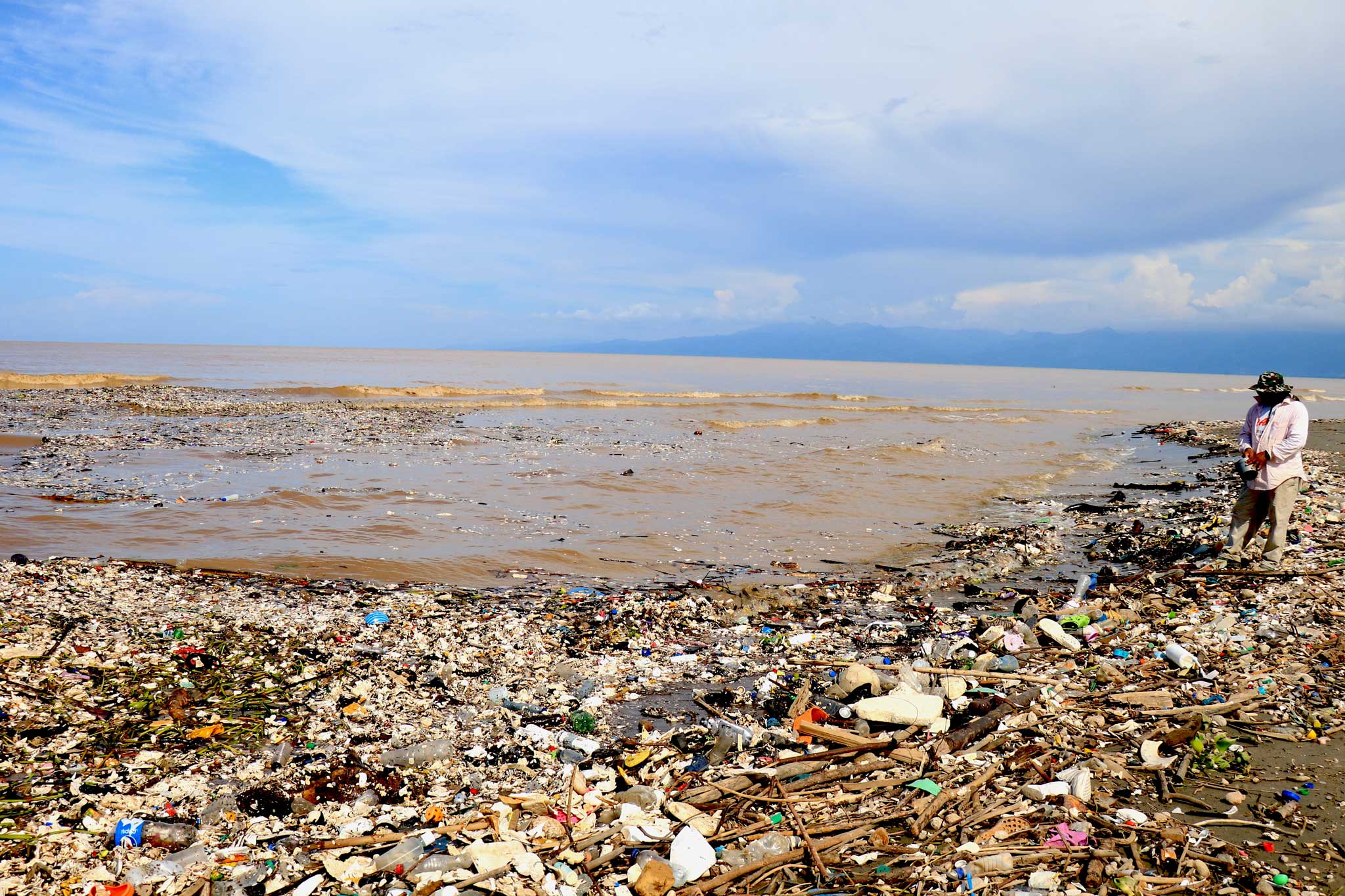Motagua: A river that rises in Guatemala and is threatened in Honduras
An avalanche of waste violates Central American borders and threatens to unleash a diplomatic conflict.
By Jorge Rodríguez, Richard Carbajal y Misael Colindres
The scene is cinematic: A little boy collects plastic figurines on the beach to give to his mother who puts them in the traditional Christmas nativity scene. It doesn’t matter that the toy animals are mutilated or discolored. To the childish eyes of Eduardo – now 22 years old, a nature photographer and tourism promoter – they were “gifts” brought by the river, another miracle of the Caribbean paradise of crystal-clear waves and sea breeze in which he spent his childhood.
This is Omoa, one of the main tourist destinations in Honduras, a Central American country that receives nearly one million international visitors a year. This small city located in the northern part of the country has a compelling colonial past highlighted by the San Fernando Fortress, a varied gastronomy and the vibrant cultural diversity brought by the 57,000 mestizos and garífunas, Afro-descendants from the Caribbean regions of Belize, Guatemala, Honduras and Nicaragua.
Just 19 miles from Omoa flows the Motagua River, a 300-mile waterway that originates in Guatemala and meanders through seven ecoregions where it is possible to see the iconic quetzal, the sacred bird of the Mayas; the heloderma, a compact reptile so venomous that locals claim even one’s own shadow must be protected against its bite; and, of course, the jaguar, the powerful feline that dominates the Central American rainforest where the river’s fresh water flows into the waters of the Caribbean.
It is a picture of a paradise that, nevertheless, has its own poison. For years, the same river that once gave toys to Eduardo has brought misfortune to the inhabitants of the region and an environmental conflict that is crossing international borders.
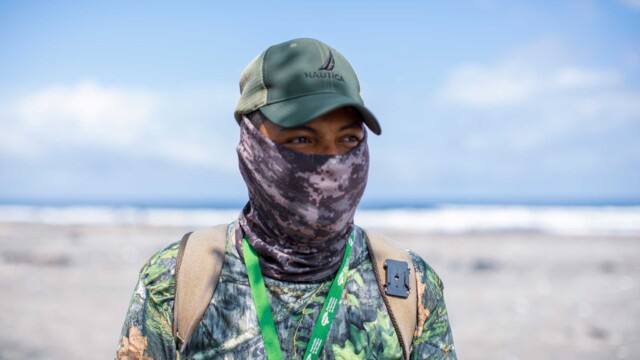
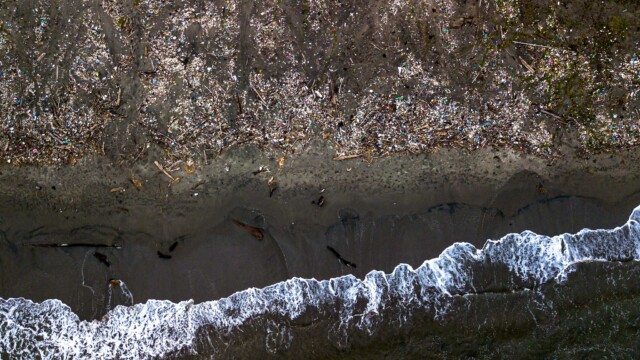
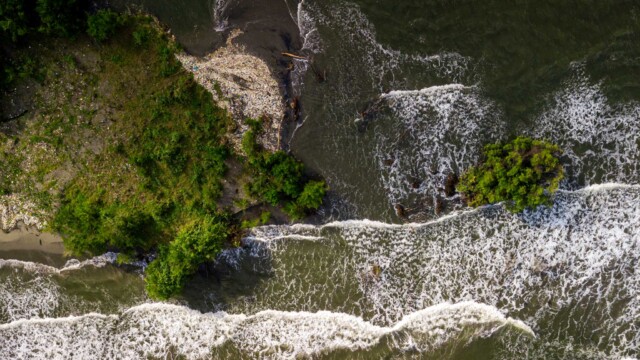
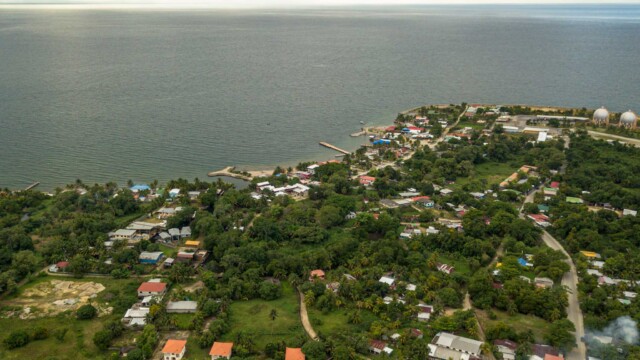
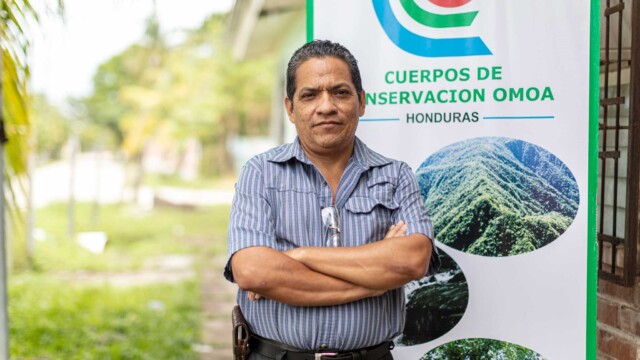
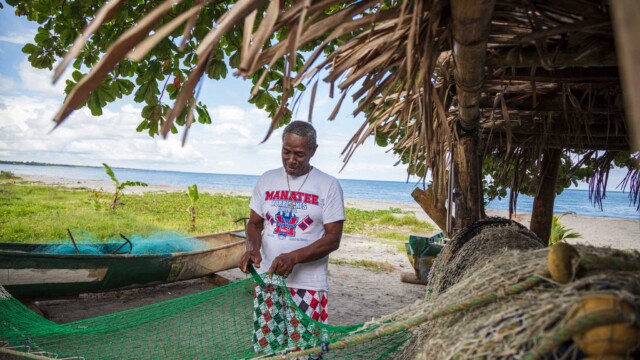
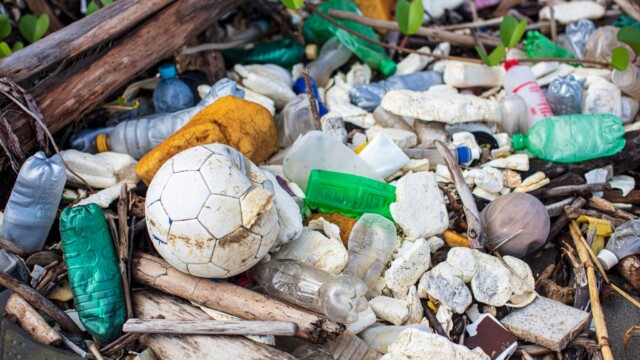
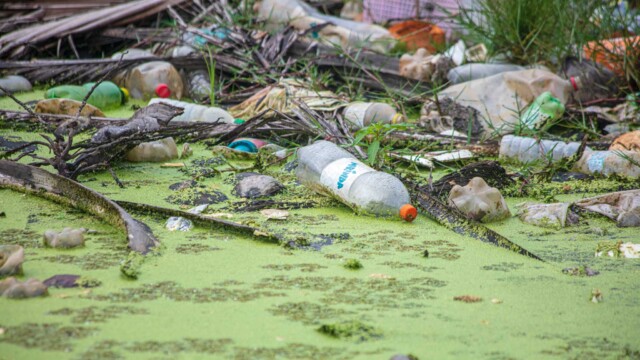
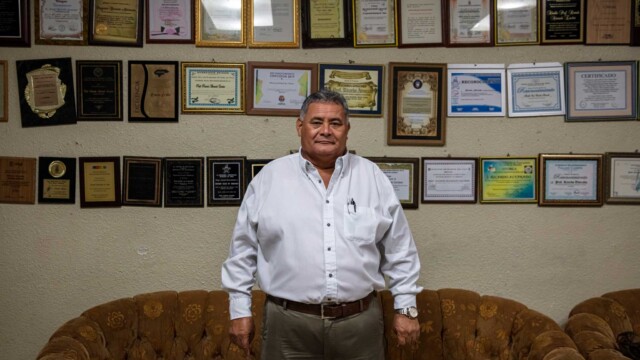
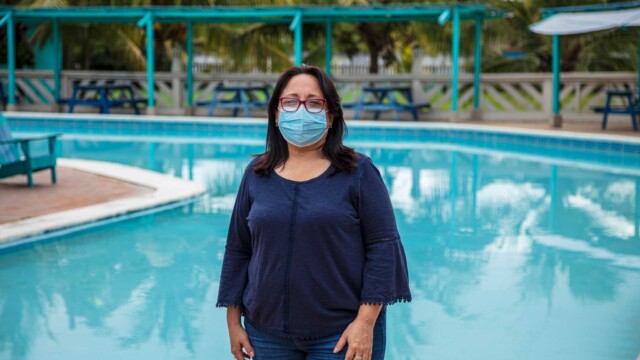
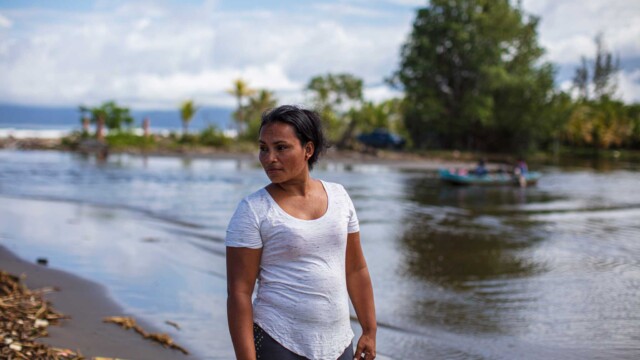
Emigrating through garbage
The Motagua originates in Joyabaj, which in Maya –k’ich’e “Xol abaj– means “between rocks.” During the pre-Hispanic splendor of the Mayan culture, the river was a lucrative commercial route that passed through the only jade reservoir in Mesoamerica as well as valuable stone deposits such as marble.
But its contemporary history is marked by another kind of abundance – rural or semi-urban settlements, the lack of effective infrastructure for waste management and water treatment, and a culture of waste that has given the riverbed an unfortunate function: landfill.
How much waste does this body of water receive? The answer is not easy. But a quick calculation reveals a big problem. From its source in Guatemala to the Honduran Caribbean, the river flows through 80 municipalities inhabited by about five million people who, according to Guatemala’s Ministry of Environment and Natural Resources, throw away an average of 1.15 pounds of waste per day: plastic bottles, utensils of all kinds, discarded clothes and even dead animals.
The river receives everything that is no longer useful and that escapes the Guatemalan authorities who in 2021 announced with great fanfare the capture of 1,550 tons of solid waste, a titanic effort that nonetheless failed to prevent the Honduran Caribbean from receiving 600 tons of waste that impacted more than 30 miles of beach in Omoa.
“We clean up garbage that is not ours. Everything comes from Guatemala. We can clean it up in the morning, but it’s pointless because by the afternoon it’s full of garbage again,” laments Ricardo Alvarado, mayor of Omoa, who is a witness to the constant flow of garbage that hoteliers, fishermen, volunteers and military personnel remove again and again.
“During the winter season, we have counted up to 60 tons of garbage collected per day. This means a loss for us, since about US $4,059 a month is invested,” adds Alvarado, who has served as mayor of Omoa for 12 years.
While the situation in tourist areas is discouraging, what is happening in low-income areas is catastrophic. Barra del Motagua, an area located a short distance from the place where the river meets the sea, was declared high risk and uninhabitable for the 80 families that still live there and are in the process of being relocated through the NGO Training, Education, Production, Unification, Development and Organization (CEPUDO-Honduras).
Despite their impending fate, the future emigrants of the garbage continue their fight for the environment. Paula Yesenia Rivera, single mother of three children, has joined other families in dedicating part of her time to reforesting mangrove to conserve biodiversity and protect the coastal zone from erosion. The mangrove will serve as a nesting site and a source of food for native and migratory birds that arrive on Honduran soil.
“It is not something that is easy. It is a lifetime, 33 years of living here and suddenly they tell you, ‘You are leaving and not coming back,’ ” says Rivera.
She recalls that in 2019 “more than 3,000 sacks of garbage” were removed from the area. Now, Paula and her neighbors are leaving.
The garbage has won the battle.
Polluted water
The water of the Motagua not only carries discarded objects but is itself a poisoned liquid. An investigation presented in 2020 by the National Institute of Seismology, Vulcanology, Meteorology and Hydrology (INSIVUMEH) of Guatemala showed that of 27 basins analyzed (20 rivers, 3 lakes and 3 lagoons), including the Motagua River Basin, only 5 rivers and 3 lagoons have water suitable for human consumption.
The reason? Only 17.5% of municipalities have a wastewater treatment plant and most of them lack adequate management or maintenance resources.
“It is thought that municipalities do not have political will. That is the assumption. What really happens is that they do not have the necessary resources for this type of investment. It is one thing to make the investment and another to maintain it,” says Marvin De León, president of the National Association of Municipalities of the Republic of Guatemala (ANAM).
This is a problem affecting the entire nation. According to data collected by the binational project Integral Environmental Management of the Motagua River Basin, financed by the United Nations Development Program (UNDP) in Guatemala, “it is estimated that 66% of urban solid waste is not collected and there is no guarantee that the remaining 34% of the waste is properly disposed of.”
In addition, 88.32% of the landfills in Guatemala are illegal or do not have municipal authorization. On the Honduran side, things don’t look any better.
Of the 24 municipalities in the Motagua River Basin in Honduras, only Cabañas and Santa Rosa de Copán in the department of Copán, as well as Choloma, Puerto Cortés and San Pedro Sula in the department of Cortés, have sanitary landfills. The remaining 19 are open garbage dumps, according to a report from the Directorate of Environmental Management, Department of Solid Waste of the Secretariat of Natural Resources and Environment (MiAmbiente).
Ecological risks
Humans are far from being the only ones affected by the polluting tide. The avalanche of waste that reaches the beaches of Omoa and more distant areas of the island municipalities of Honduras become a giant crust made up of solid waste, masks, plastic bags and PET bottles. When that crust floats on the sea surface, it blocks the passage of sunlight and frustrates photosynthesis, that is, the generation of the first link in the food chain, with a negative effect on the entire ecosystem.
A video of a turtle having a straw removed from its nostril went viral a few years ago and discouraged the use of plastic straws in many places. But there are other images that residents of the Honduran coast see every day: sea turtles disoriented and helpless because they cannot find a suitable nesting site amid the pile of plastic garbage on the beach and sea turtles suffocating in the ocean because they cannot distinguish between a semi-floating plastic bag and a jellyfish, one of their favorite foods.
Uncertain future
Business owners in Omoa, together with a group of mayors from several Caribbean municipalities in Honduras and Guatemala, have begun to talk about an international lawsuit against the Guatemalan government for damages caused by the contamination of the Motagua River.
Although nothing has materialized in a tangible document and everything seems limited to a vigorous exchange of words, meetings are intensifying and there are efforts to include Guatemala City in the lawsuit because most of the garbage that travels along the Motagua comes from Guatemala’s capital city.
“We are tired of meetings with Guatemalan authorities, practically just to have a cup of coffee. What we want are answers,” says Ricardo Alvarado, mayor of Omoa.
Maribel de Umaña, president of the Chamber of Commerce of Omoa who is also affected by the waste that reaches her business on the beach, says “the Honduran Council of Private Enterprise – Cohep – made public that it was going to initiate a lawsuit. I do not know if it has already started the process, but I do know that it was going to sue as a private company.”
Since the Guatemalan efforts have not achieved the expected solution, Honduran private enterprise is also considering filing a lawsuit against the government of Guatemala as tourism losses have risen to US $2.6 million per month, according to the Chamber of Tourism. The damage to the image of the destination and the country is incalculable.
The escalation of the problem led the government of Guatemala through its Ministry of Environment and Natural Resources (MARN) to report during the 2019 United Nations Climate Action Summit that it had installed more than 200 “biofences” in different rivers, a national technological development that was proudly displayed as effectively stopping solid waste before it reached the Pacific and Atlantic oceans. But the biofences – which cost US $2.5 million to install – failed to live up to those lofty expectations.
On the Honduran side, a high-level call to action was made by Liliam Rivera, former Secretary of State for Natural Resources and the Environment. In a statement, she requested sensitivity to the Motagua River issue from Guatemalan authorities, as well as Guatemala’s entire population, and cited the “great effort” made to clean up the beaches.
El Mensaje de la Ministra de Ambiente de Honduras a su homólogo guatemalteco. pic.twitter.com/DXdYeR9xdc
— Heidi L. (@lo_hS502) January 22, 2022
“Honduras has reiterated that it seeks concrete, sustainable and, above all, permanent solutions to stop the environmental damage and transform the affected areas into zones with higher levels of development,” the statement said. The words “brother country” were mentioned several times in the statement but despite the diplomatic language, the statement pointed out the ineffectiveness of the biofence in El Quetzalito, constructed at a cost of US $2.44 million, which is more effective when the river flow is low than during the rainy season.
Guatemala’s legacy?
No one wants to take care of their neighbor’s garbage.
In the case of the Motagua river, the conflict is escalating to an international level. Presidential administrations in Honduras and Guatemala have been looking for years for a solution to the waste that floats down the river to the Honduran coasts. But according to those affected, the presidents who have come and gone in both countries for more than a decade have done little more than make empty promises.
Maribel de Umaña, president of the Chamber of Commerce of Omoa (CCO), says the impact of the environmental problem makes her municipality look bad to tourists. “Here, there is damage to our image which we have to work on and reverse. The beaches are clean not because there is no garbage but because we spend an enormous amount of economic and human resources to keep them clean.”
The conflict has resulted in measures such as the construction of fences along the river. In 2007, Yuri Guzmán, a worker for the Authority for Sustainable Management of the Basin and Lake Amatitlan (AMSA), with the help of other colleagues, designed a mechanism to prevent the transfer of garbage.
“After some tests, we decided to work with three plastics (PET) in a sequence, one full and two empty, until we reached the length of the fence we needed,” and that is how the artisanal fence (SEE GRAPHIC) that former Guatemalan President Jimmy Morales labeled “Guatemala’s legacy for the preservation of rivers, lakes and seas of the world” was created.
However, these types of measures will provide only small measures of relief if they are not backed by political efforts to solve the problem. There have been efforts focused on the recovery and reuse of solid waste, and even the manufacture of eco-asphalt, which was used for the construction of a parking lot at the University Center of Izabal in Guatemala.
Bold steps are needed, such as Guatemala’s efforts to eliminate illegal landfills which represent 88.32% of all landfills in the country. There is some movement in that direction but more is needed. By the end of 2020, 1,400 illegal landfills were reported closed in Guatemala.
In 2021, the governments of Guatemala and Honduras announced the creation of the Cuyamel-Omoa Punta de Manabique Biological Corridor, a 136,000-acre area with coral reefs, seagrasses, mangroves and subtropical forest that connect the two nations, and an initiative that proposes bilateral management through the participation of communities, municipal and government authorities, as well international cooperation.
The situation prompted the Guatemalan Minister of Environment, Mario Rojas, to state that “for the first time in 2021 we managed to stop the tidal wave of solid waste in the Motagua River from reaching Honduras.”
Both governments launched the binational Integral Environmental Management of the Motagua River Basin, which involves the implementation of nine pilot projects (six in Guatemala and three in Honduras), in which US $7 million will be invested (US $3.5 million per country). The environmental management plan includes reforestation of mangroves and forests in the upper basin of the river, as well as the implementation of effective solid waste management strategies, and the development of innovative low-cost technologies that would help manage wastewater and solid waste more efficiently and prevent them from reaching water bodies.
For experts like Honduran biologist Ian Drysdale, who works to protect Mesoamerica’s coral reef, the real solution is for the entire population, not just politicians, to take an interest in the situation. “If we continue consuming as we have been, and electing politicians as we have been, there is not much to be done,” he laments.
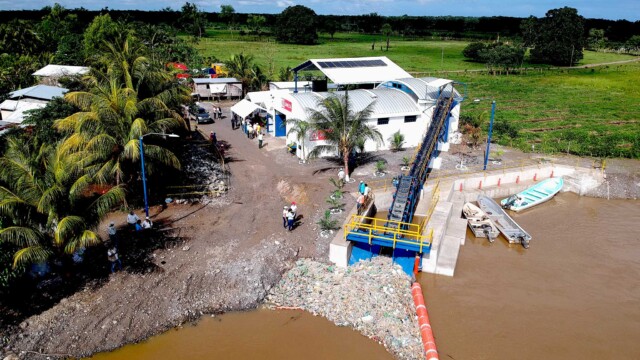
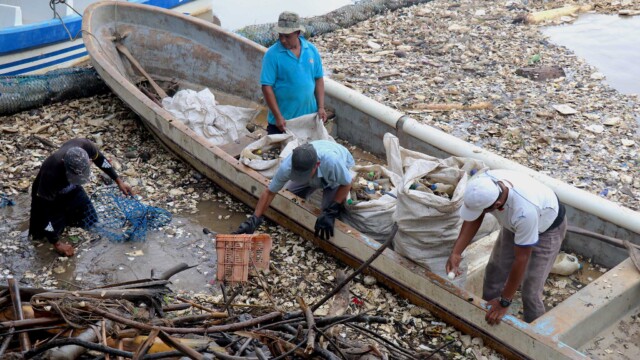
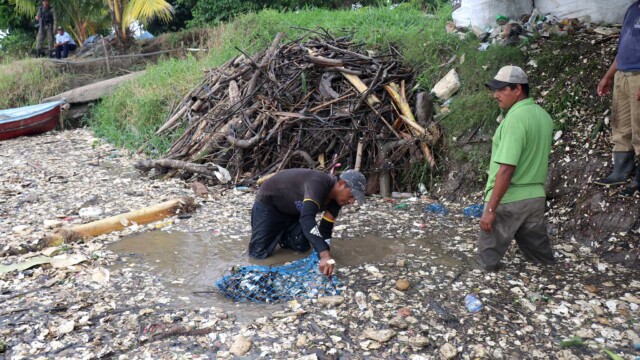
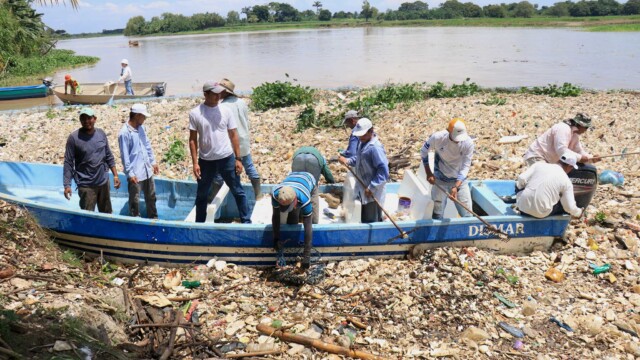
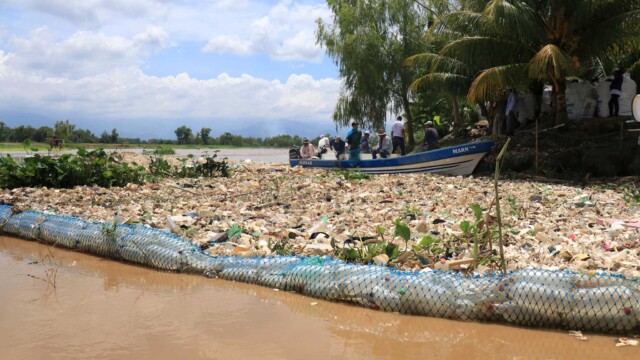
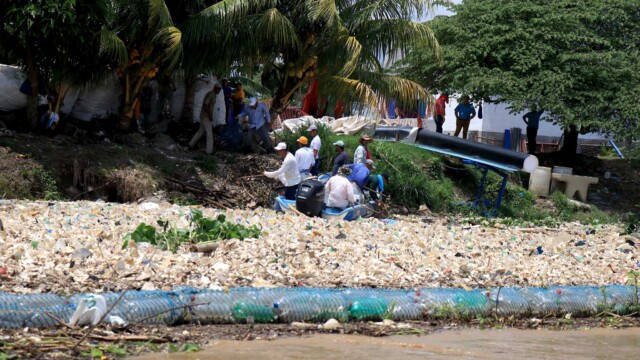
Biofences
However, these types of measures will provide only small measures of relief if they are not backed by political efforts to solve the problem. There have been efforts focused on the recovery and reuse of solid waste, and even the manufacture of eco-asphalt, which was used for the construction of a parking lot at the University Center of Izabal in Guatemala. Bold steps are needed, such as Guatemala’s efforts to eliminate illegal landfills which represent 88.32% of all landfills in the country. There is some movement in that direction but more is needed. By the end of 2020, 1,400 illegal landfills were reported closed in Guatemala.
In 2021, the governments of Guatemala and Honduras announced the creation of the Cuyamel-Omoa Punta de Manabique Biological Corridor, a 136,000-acre area with coral reefs, seagrasses, mangroves and subtropical forest that connect the two nations, and an initiative that proposes bilateral management through the participation of communities, municipal and government authorities, as well international cooperation.
The situation prompted the Guatemalan Minister of Environment, Mario Rojas, to state that “for the first time in 2021 we managed to stop the tidal wave of solid waste in the Motagua River from reaching Honduras.”
Both governments launched the binational Integral Environmental Management of the Motagua River Basin, which involves the implementation of nine pilot projects (six in Guatemala and three in Honduras), in which US $7 million will be invested (US $3.5 million per country). The environmental management plan includes reforestation of mangroves and forests in the upper basin of the river, as well as the implementation of effective solid waste management strategies, and the development of innovative low-cost technologies that would help manage wastewater and solid waste more efficiently and prevent them from reaching water bodies.
For experts like Honduran biologist Ian Drysdale, who works to protect Mesoamerica’s coral reef, the real solution is for the entire population, not just politicians, to take an interest in the situation. “If we continue consuming as we have been, and electing politicians as we have been, there is not much to be done,” he laments.
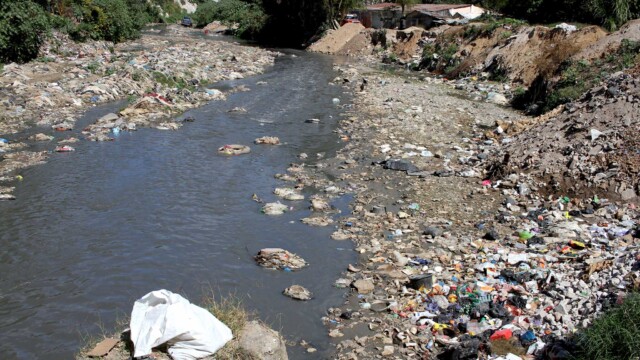
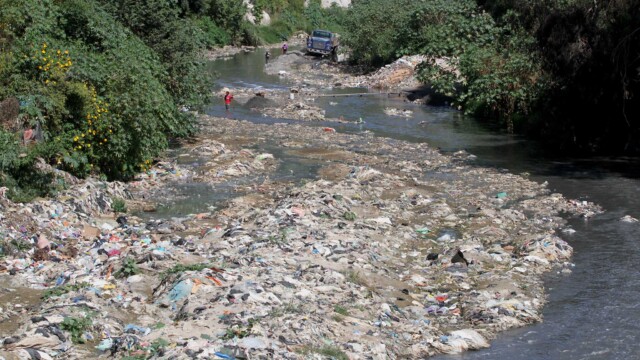
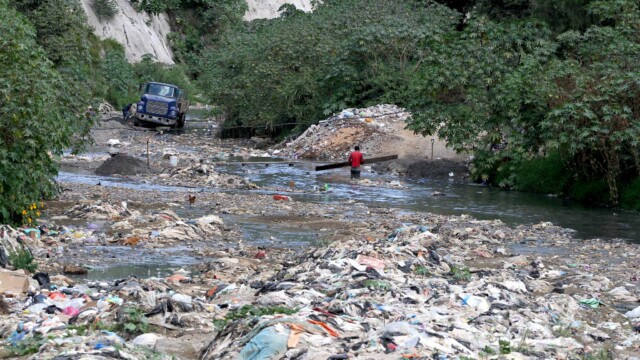
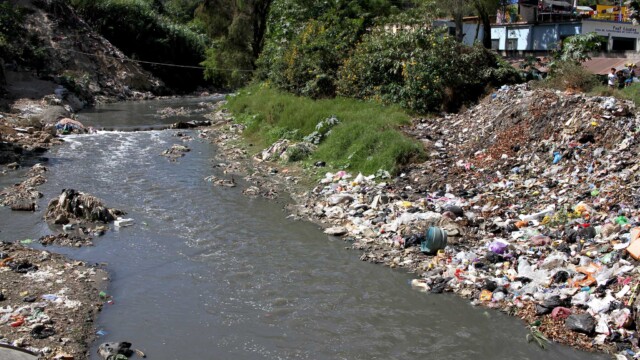
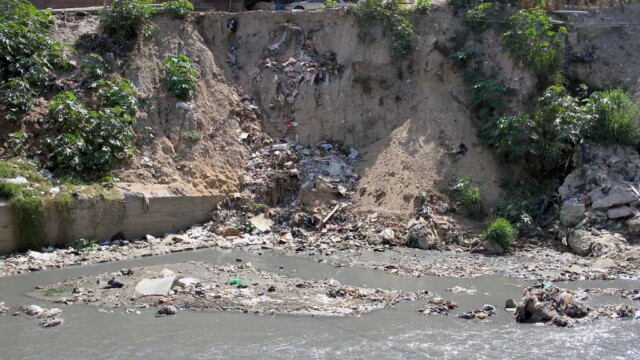
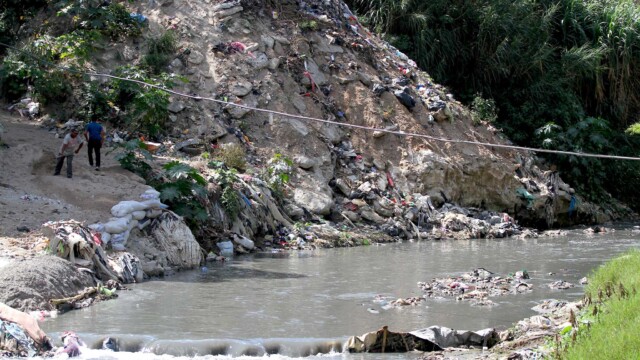
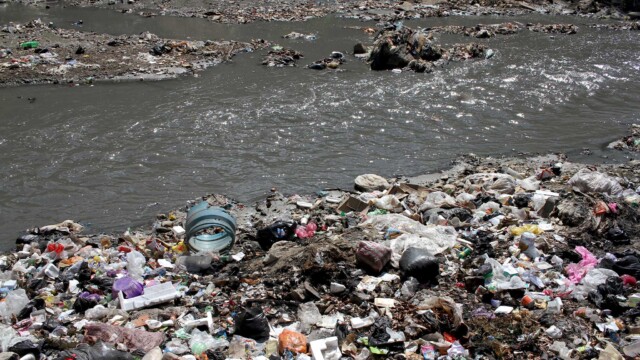
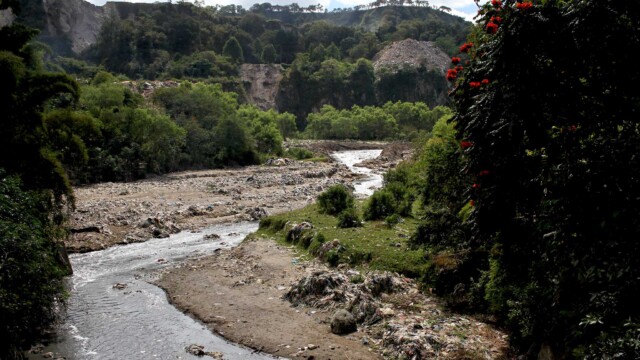
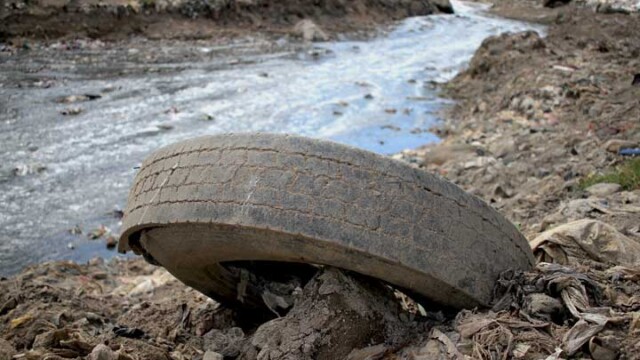
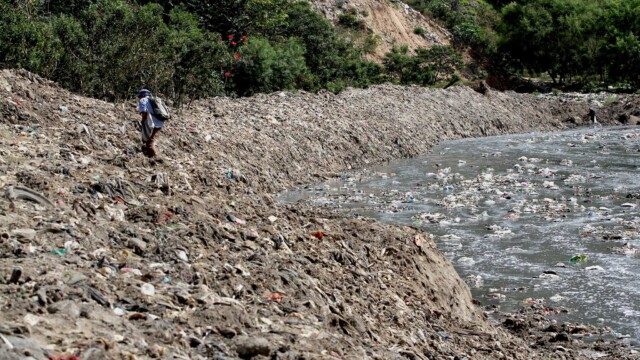
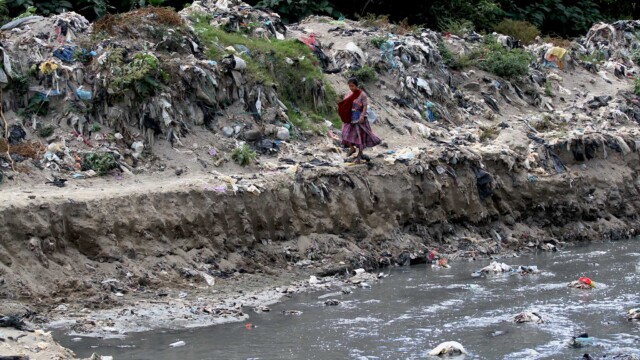
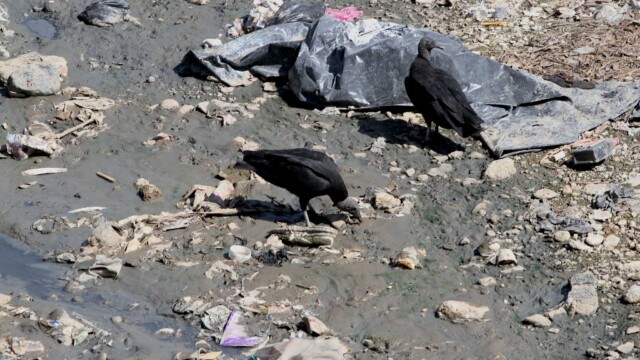
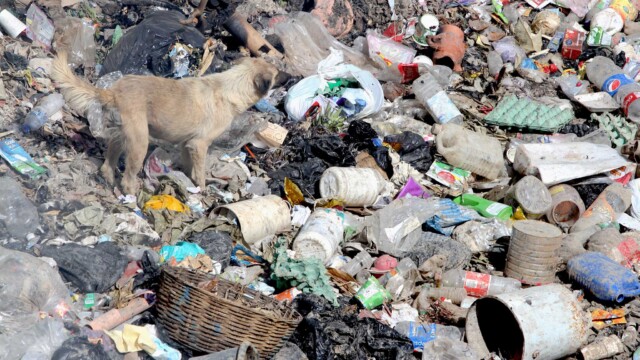
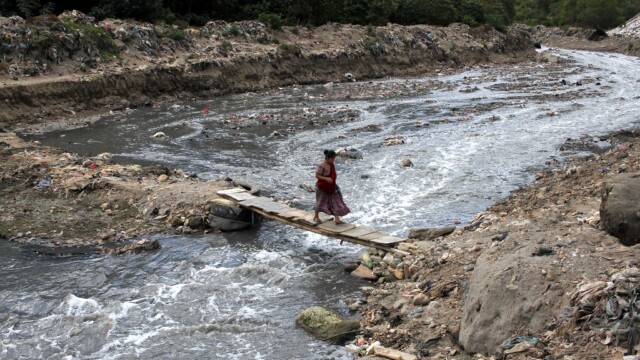
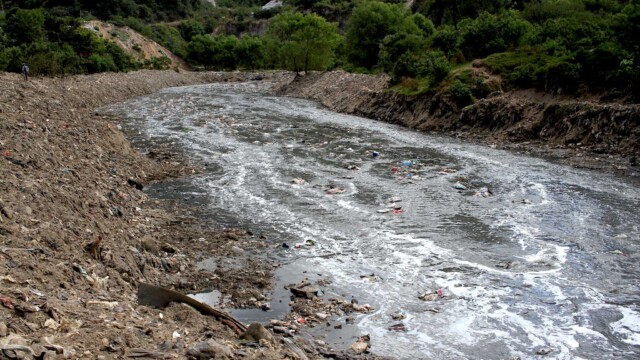
A sad reality
“It is very sad to see how people have to deal with so much garbage every day,” sighs a coastal resident who goes by the name “Don Taco” and survives by fishing in Punta de Manabique, Guatemala’s northeastern most area bordering Honduras. He lives surrounded by tons of plastic containers floating in the river, plastic bags stuck in tree branches, the intense aroma of accumulated garbage and a tide of dead fish.
There are many who live like Don Taco, residents of communities who have watched the tide of garbage and poisonous water rise with every passing year.
First, the community members had to accept that the river water of their childhood was no longer suitable for swimming. Then, the dead fish were a sign that it was no longer an option for food. Now, the risk is that it is no longer even suitable for irrigating their crops, not even for these people, who were born here, to continue living.
But the “resilience,” of which the former Honduran Vice Minister of Environment, Carlos Fasquelle, so proudly spoke, forced the people of Omoa to take advantage of the garbage that the river carries: from toys, as in Eduardo’s home, to fuel to light the fires of the homes to cook beans and make tortillas, despite the health risk that it represents.
After millions of dollars spent on cleaning up the affected areas, and after the decision to relocate an entire community because of the risk to their lives, there is still not enough environmental concern to motivate the authorities of both countries to find an effective solution.
Despite everything, Eduardo hopes that through nature photography and tourism promotion more people will learn to appreciate what his hometown has to offer. “Omoa is a hidden paradise that has many wonders that are still unexplored,” he says as he lifts his camera to capture the sunset from the beach.
